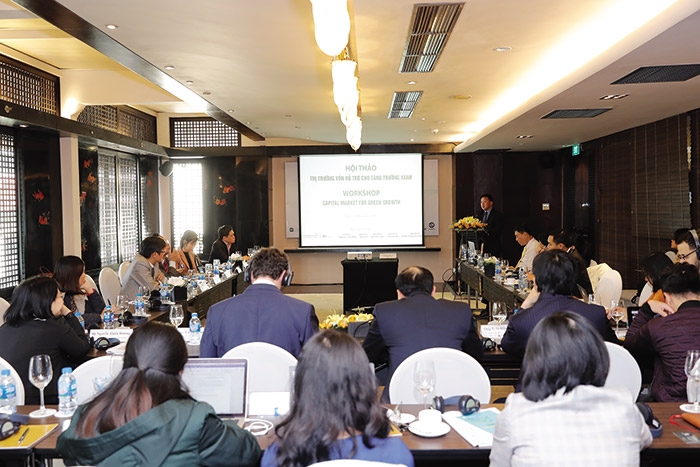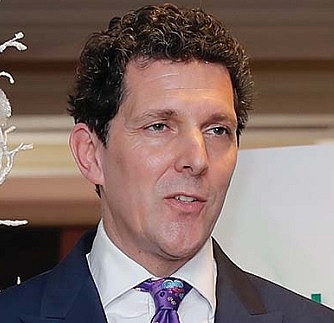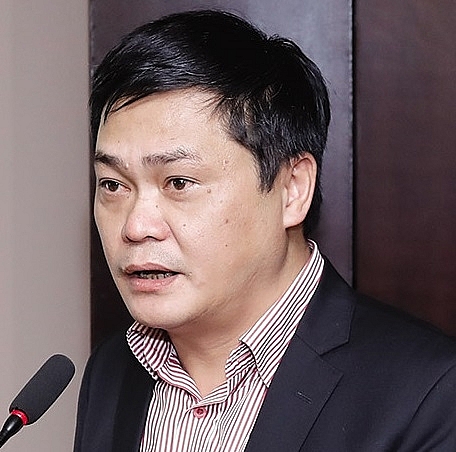Connecting Vietnam to Euro funders
 |
| The influential European nation of Luxembourg is keen to strengthen ties with Vietnam |
Despite being a small European nation, Luxembourg has emerged as the largest investment fund centre in Europe, with some EUR4.23 trillion ($4.82 trillion) in assets under management recorded in June 2018, and second in the world with over 61,000 cross-border fund registrations in 70 markets across the globe.
“Luxembourg is the shortest route throughout Europe to attract international investors and into Vietnam. Luxembourg-domiciled funds, as in the cases of Saigon Securities Incorporation (SSI), Dragon Capital, and VinaCapital, are examples of the keen interest and appetite for investment in Vietnam,” said Marc de Bourcy, chargé d’affaires at the Luxembourg Embassy, on the sidelines of the workshop featuring ‘Capital market for green growth’ hosted by the State Securities Commission (SSC), in conjunction with Luxembourg Aid & Development in Hanoi last week.
“My job is to build bridges between our two countries, our people, and through the Luxembourg Development Co-operation system, our capital market is trying to build a stronger connection with the Vietnamese capital market,” he stressed.
For such connection to form and pave the way for more investors from Europe, de Bourcy noted that Vietnam would need a reputable and transparent marketplace, on top of the policies and strategies set in place for the local stock exchanges, investors, and promoters that are deemed to be on the right track.
The government of Luxembourg has been supporting the development of the Vietnamese capital market and provided technical assistance to the SSC, as well as other stakeholders in the fields of banking, insurance, and securities for over 10 years.
“We have been moving away from grant-based official development assistance (ODA) towards non-ODA partnerships in sectors like renewable energy, environment and climate change, finance and banking, research and education, and we are seeking to further support the development of the Vietnamese financial centre,” said Marc de Bourcy.
When a nation looks beyond mere growth to sustainable development, it ought to take a closer look at sustainable financing for development. In order to effectively finance the green growth strategy of the government or the roadmap, a nation would need a vehicle, that is, a sustainable systemic financial centre.
“You need a strong, resilient modern capital market to do so,” said de Bourcy. “I think Vietnam, with the decision, the roadmap, and the action plans, is on the right track. And we are looking forward to showcasing what we have done, see whether we can build bridges and – in case Vietnam would like to level up – Luxembourg, as a natural and longstanding partner of Vietnam, would try to attract the international investments needed to fuel or fund these bankable projects.”
Thanks to the development co-operation between Vietnam and Luxembourg, with the rise of project VIE032 that has been rolled out over the past two years, the local stock market has been leveraged to improve its capacity. It has also triggered the green financial co-operation between the two nations.
“I think that in the time to come, mutual development co-operation in the field of green finance between the two countries will be strengthened. Especially, capacity building will be a key in the development of a green capital market in Vietnam,” said Pham Hong Son, vice chairman of SSC.
The challenges for the development of green capital market in Vietnam, according to Son, are grand, as the country, together with others around the world, is in the progress of finalising green finance policies, establishing institutions for sustainable development, as well as developing international standards in this area.
“For developing countries like Vietnam, a trade-off between the environment and short-term profit is still taking place in many businesses, with the latter winning out more often than not. The biggest problem, in my opinion, is the perception of investors and capital market participants,” noted Son.n
Pham Hong Son Vice chairman, SSC
 |
In the 24th session of the Conference of the Parties (COP 24) in Poland in December, participants came to an agreement on the guidelines for implementing the Paris Climate Change Agreement 2015.
The financial markets are also involved. Vietnam’s financial market, in particular, has been working on policies and introducing financial initiatives to strengthen capital mobilisation efforts to combat climate change and support green growth. Vietnam taking part in the agreements, in the knowledge exchange forums, and its setting up of green fiscal policies demonstrates the country’s and its financial sector’s efforts in developing a financial market for green and sustainable investment projects.
Vietnamese government has approved the ‘National strategy on green growth for the period 2011-2020, with a vision to 2050’ in its Decision No.1393/QD-TTg. The Minister of Finance has also issued Decision No.2183/QD-BTC promulgating the ‘Financial Sector Action Plan on the Implementation of the National Green Growth Strategy up to 2020.’ Most recently, the chairman of SSC has also issued Decision No.948/QD-UBCK on ‘Green Growth Plan for the period of 2019-2020 in the field of securities.’
Vietnam is in the early stage of finalising green finance policies to facilitate responsible investment and business operations in the financial market. A number of green bond issuances have been conducted at the local level as pilot projects. This means there is a lot of work to do.
Marc de Bourcy Chargé d’affaires, Luxembourg Embassy in Thailand
 |
The Vietnam Green Growth Strategy fully embraces objectives such as traditional lifestyle and living in harmony with nature in its green economy paradigm.
The World Bank and other multilateral development banks have been warning since 2015 that the implementation of Sustainable Development Goals (SDGs) that heads of state and governments have adopted will require moving funding and financing efforts from billions to trillions, and only combined funding and financing from the public and the private sector side can make it possible, with the private sector taking the lead.
Vietnam’s leadership is well aware that the implementation of the 17 Vietnamese SDGs and 115 specific targets depends in large part on resource mobilisation and effective and credible participation of the private sector, and more specifically through Vietnam’s growing capital markets and key finance and banking players. These actors and players will be crucial in attracting important international investments and investors to finance clean energy projects, energy efficiency, public transport, and water in Vietnam. Currently there is an estimated financing and investment gap of about $2.5 trillion per year worldwide, while in Vietnam there is a funding need of about $30 million by 2020, primarily in the energy sector. The state budget is able to shoulder about $10 billion, to which Development Partners contribute about 30 per cent via ODA and climate finance, hence there is a funding gap of about $20 billion in green growth projects in Vietnam until 2020. The Ministry of Finance has been proactively developing the framework for green capital market and green finance products to mobilise key private investment capital into the National Action Plan for Green Growth. In this context, the vision of SSC to devise a 2030 roadmap for the development of Vietnam’s stock market is commended for facilitating more and greener capital markets and sustainable financial products.
Nguyen Tuan Anh, Deputy director, Department of Science, Education, Natural Resources and Environment (MPI)
 |
When we came up with the National Strategy on Green Growth for 2011-2020, we estimated Vietnam will need $30 billion by 2030 to implement it. In the green development, 70 per cent is expected to come from the private sector as public funds alone will not be sufficient to fund the growing demand. State capital and ODA are merely inducement, and the government mainly creates a model in terms of framework to promote private sector participation, particularly through green bonds and securities to take part in the implementation of the national strategy on green growth.
We have witnessed the private sector investing at least $9 billion in renewable energy and energy savings that shows the prospects of green growth. The issue now really lies in the financial mechanisms that can pave the way for co-operation between the private sector and financial institutions for the capital needed to invest in these kinds of projects.
What the stars mean:
★ Poor ★ ★ Promising ★★★ Good ★★★★ Very good ★★★★★ Exceptional
Related Contents
Latest News
More News
- Cake by VPBank posts strong gains in scale and efficiency leveraging AI focus (January 05, 2026 | 18:55)
- Banks step up listing plans in 2026 to strengthen capital and transparency (December 31, 2025 | 18:59)
- Ho Chi Minh City projects $10.5 billion remittance inflows in 2025 (December 31, 2025 | 18:58)
- New decree sharpens enforcement in securities market (December 31, 2025 | 18:53)
- Gold market reform advances as SBV receives applications for bullion production (December 30, 2025 | 12:07)
- EVN and AFD sign credit agreement for Vietnam’s first pumped storage hydropower plant (December 30, 2025 | 10:06)
- Techcombank Priority Visa Signature unlocks a higher standard of living (December 29, 2025 | 16:44)
- Tax sector wraps up 2025 and sets priorities for next year (December 25, 2025 | 14:00)
- A tipping point for digital and hybrid wealth management in Vietnam (December 23, 2025 | 13:33)
- $250 million deal targets women-owned SMEs, sustainable agriculture (December 22, 2025 | 17:40)

 Tag:
Tag:





















 Mobile Version
Mobile Version